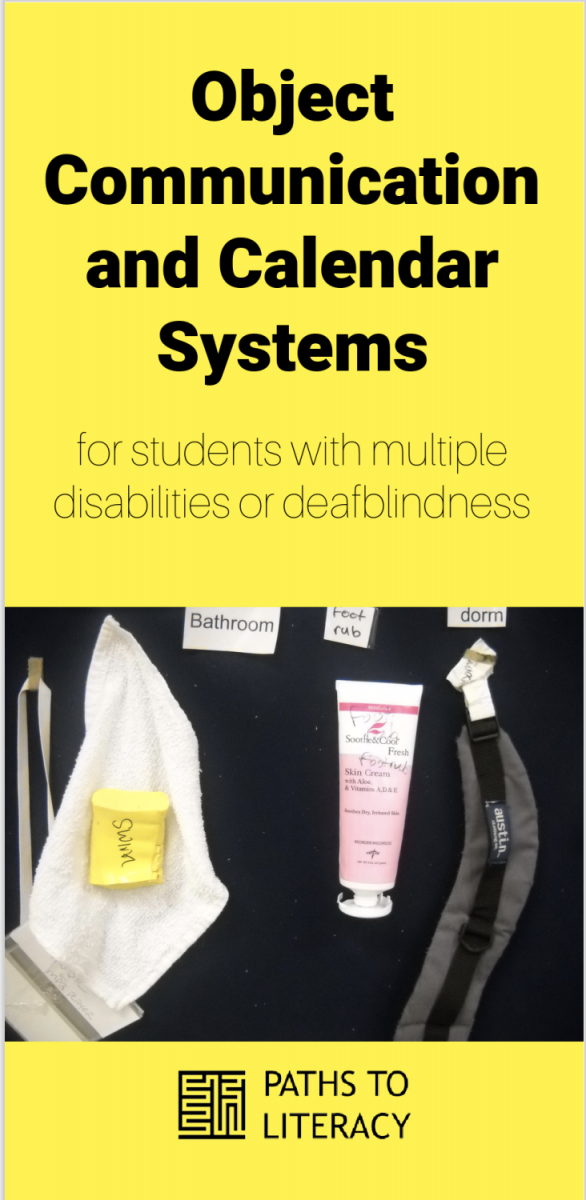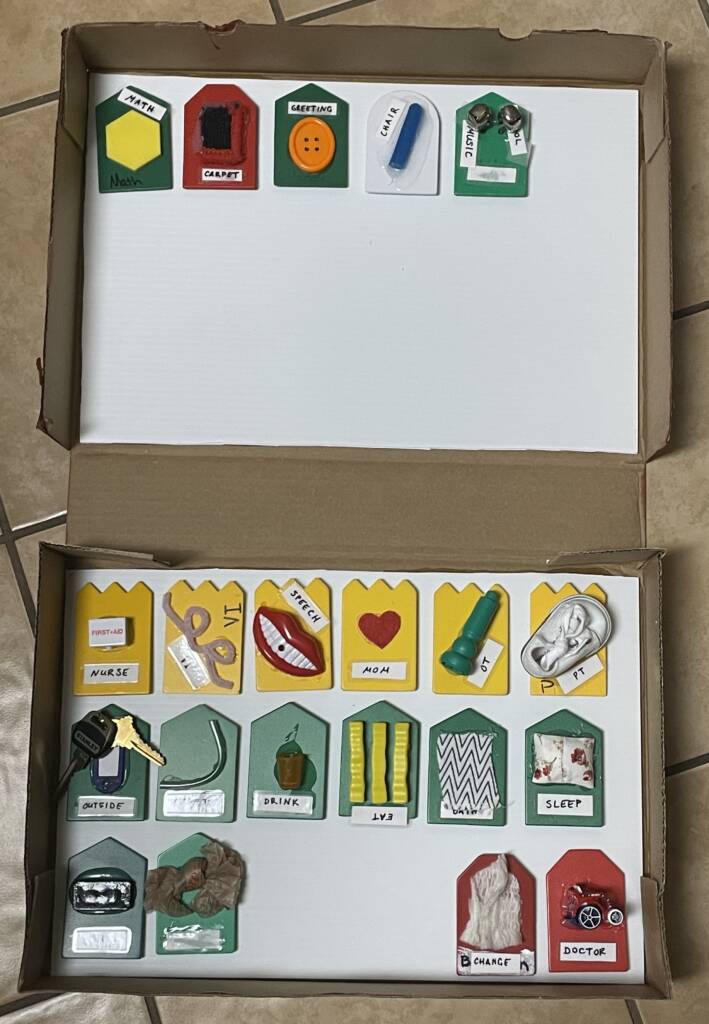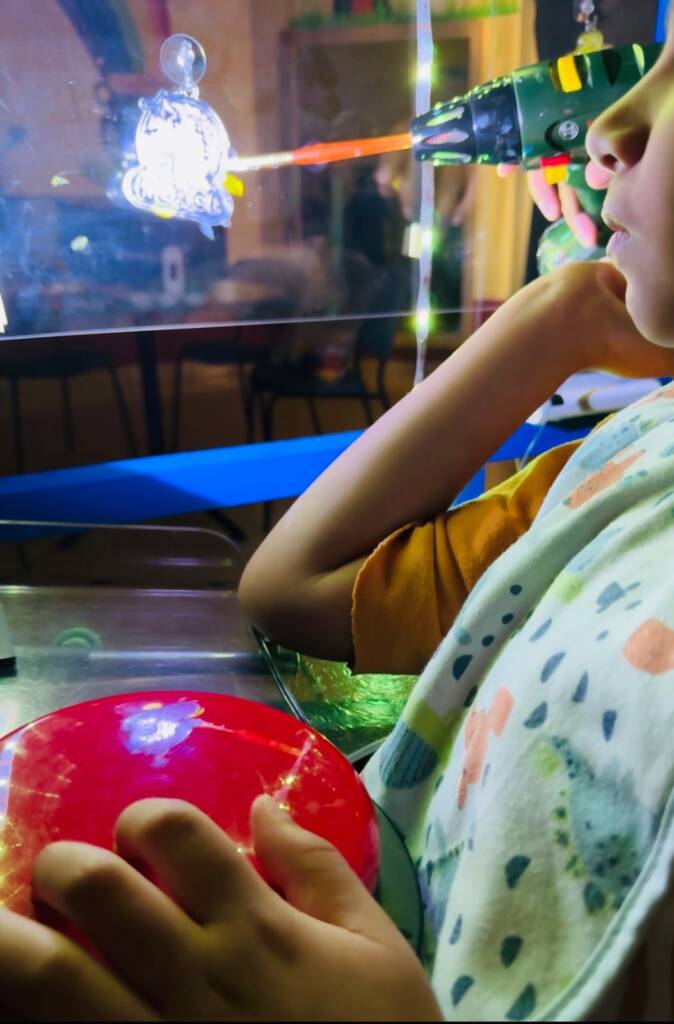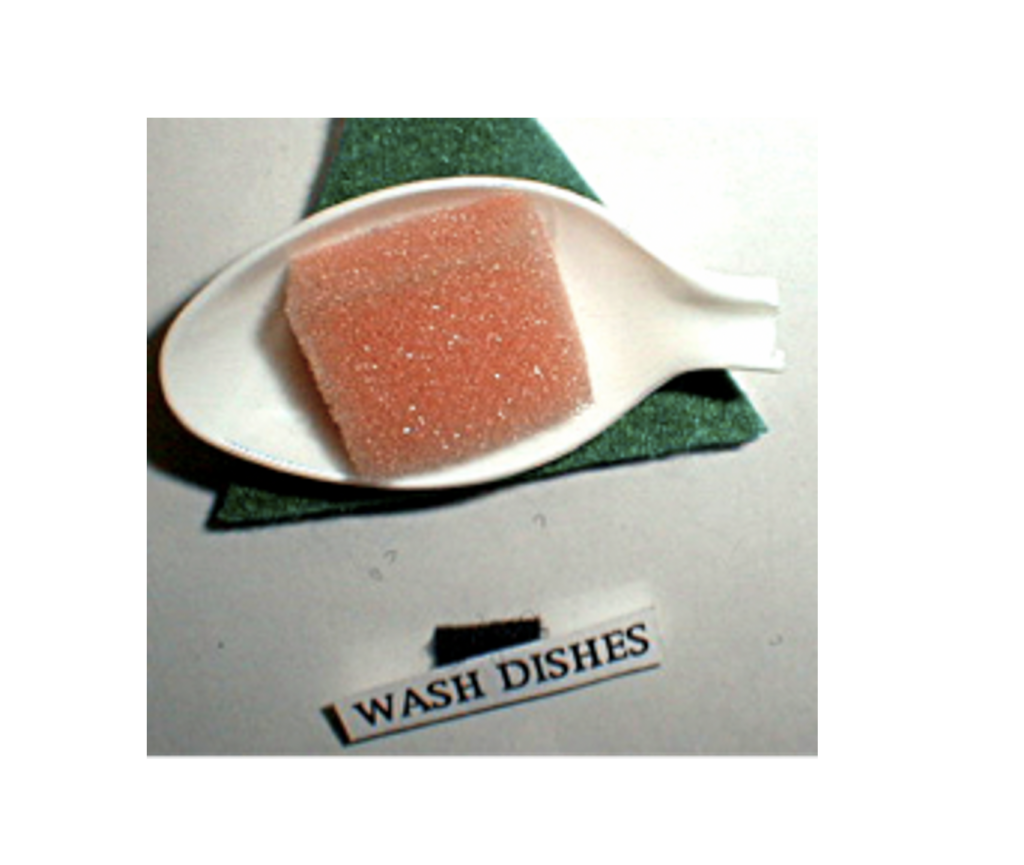Many children with visual impairments and additional disabilities have delayed language development and experience challenges with verbal or signed expressive and receptive communication. It is important to carefully assess a child’s understanding of real objects and their function before moving to a more abstract communication system. Object symbols can be used to create stories and simple books, thereby helping to build a bridge to more formal literacy.
A child must have exposure to spoken and/or signed words and real objects in the natural environment throughout the day in order to develop an understanding of objects and their functions. Knowing that a cup is used for drinking, and that a spoon is used for eating can help a child learn to anticipate these events. As the child becomes increasingly familiar with the objects, they may be able to make a request by pointing to or picking up the item associated with an activity, such as picking up a cup to indicate that they would like something to drink. In order for this to be effective, the child must know where a cup is located and have access to it. Similarly, two objects can be presented to a child to offer a choice, such as between an apple and an orange. Through the association of real objects with familiar events, a child can begin to develop a connection between objects, symbols, and experiences.
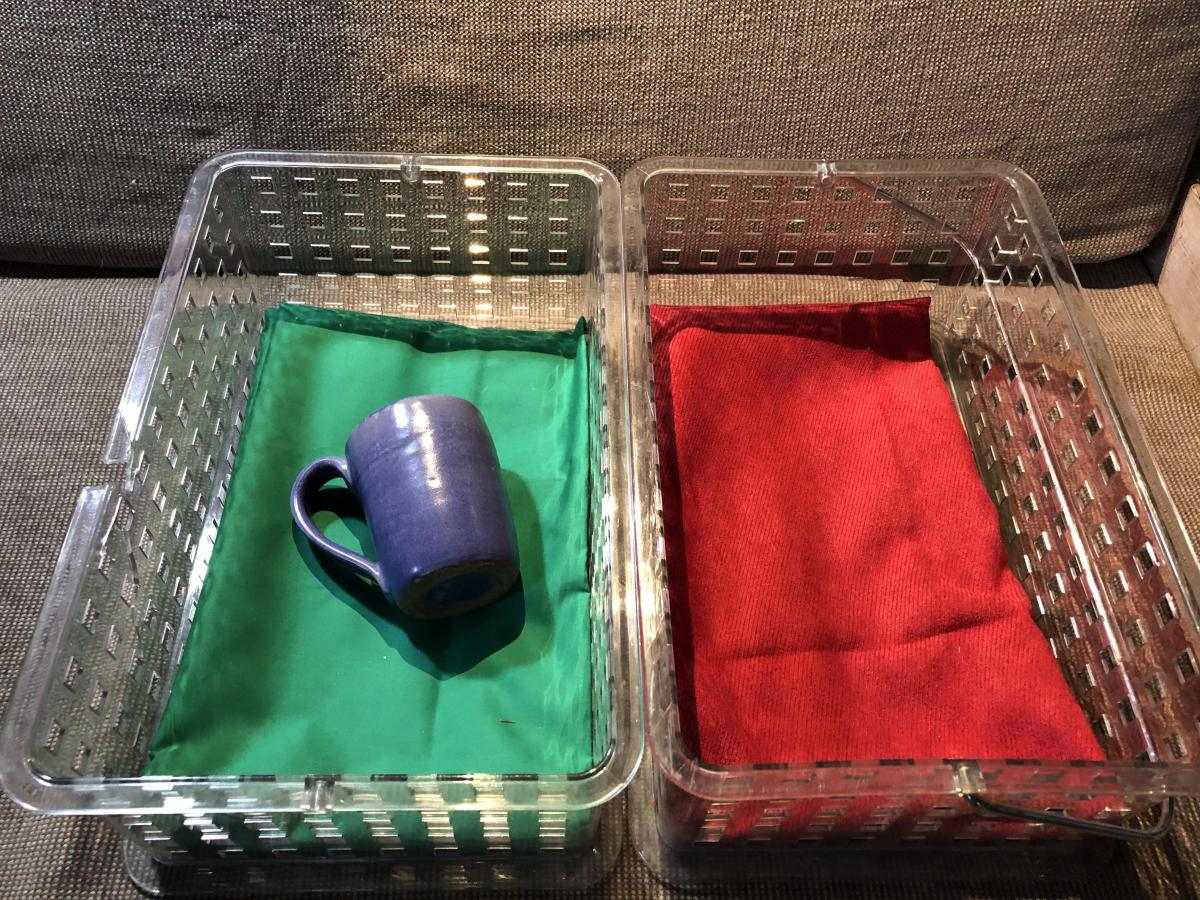
Developing a Communication System
Any programming decision should begin with a careful assessment and discussions among all members of the team, including the family. Assessment tools include:
- Assessing Communication and Learning in Young Children Who Are Deafblind or Who Have Multiple Disabilities (Design to Learn)
- Child-Guided Strategies (APH) Free download
- Communication Matrix (Charity Rowland)
- Functional Scheme (LilliWorks)
- Home/School Inventory of Problem Solving Skills (Design to Learn)
- Informal Functional Hearing Evaluation (TSBVI/NCDB)
- Sensory and Learning (APH)
- Tangible Symbol Systems: Making the Right to Communicate a Reality for Individuals with Severe Disabilities by Charity Rowland and Philip Schweigert
- Tangible Symbol Systems Primer by Charity Rowland and Philip Schweigert
Hierarchy of Communication Symbols for Tactile Learners
An understanding of communication symbols moves from a concrete to an abstract form. Real objects in the natural context are the most concrete symbols, such as a spoon at mealtime or a bar of soap at bathtime. They become slightly more abstract by embedding or mounting an object on a piece of cardboard. In this way the child is no longer using the actual spoon or bar of soap, but rather begins to understand that this item mounted on this piece of cardboard represents something similar. In the same way, a partial object can represent something else, such as the top of a fork with the tines can represent the whole fork used at mealtime.
- Real objects
- Embedded object
- Partial object
- Raised line drawings
- Pair object with braille label
- Braille
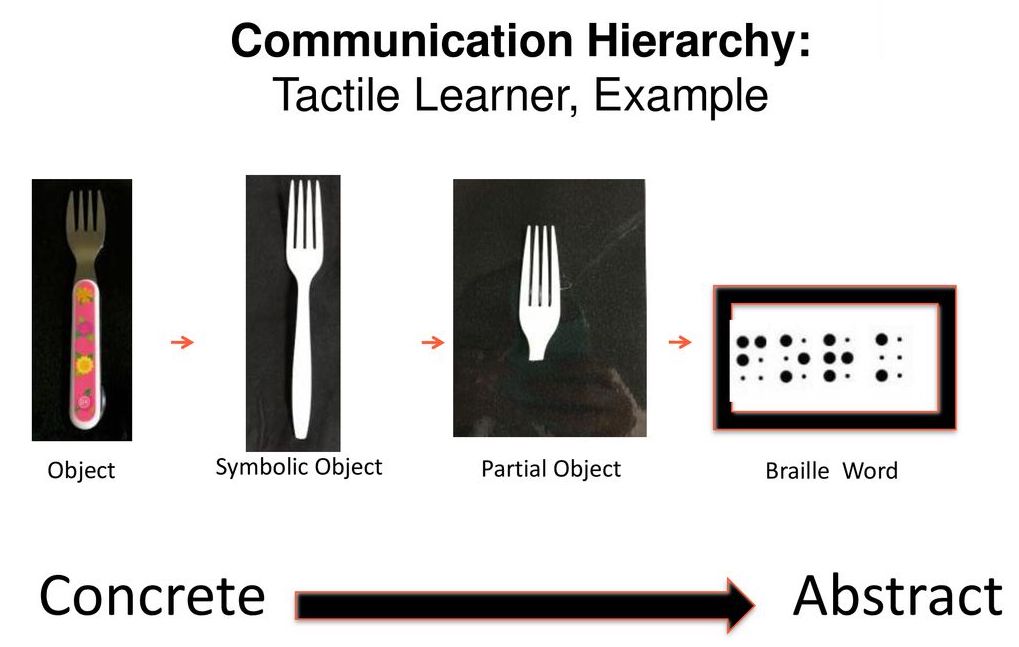
Note that students may need intermediate steps, such as pairing the partial object with a braille label.
For a visual learner, there is a similar progression from concrete to abstract. A photograph can be paired with the real object, then progress to a picture symbol, and finally to the written word in print.
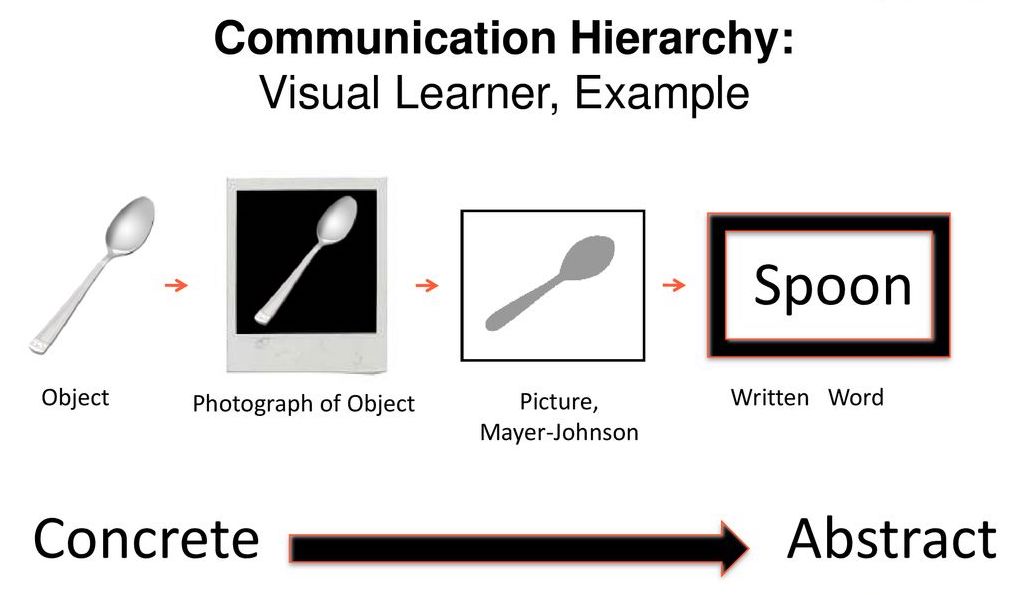
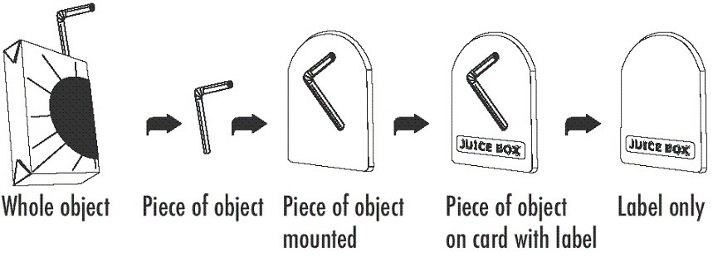
Selecting Objects and Tactile Symbols
People often wonder how to represent something that is larger or where no immediate object is available, such as going outside or riding in the car. The key to this is to think about the experience from the child’s perspective. Observe the child during a given activity and notice what aspect they are paying attention to. For example, a child may have no idea that a key is used to start a car, so keys would not be a meaningful representation of going in a car. Similarly, a miniature car would have no meaning to someone who does not have an understanding of symbolic representation. Perhaps the child feels the seatbelt in the car and a seat belt buckle may then be the most meaningful way to represent going in the car.
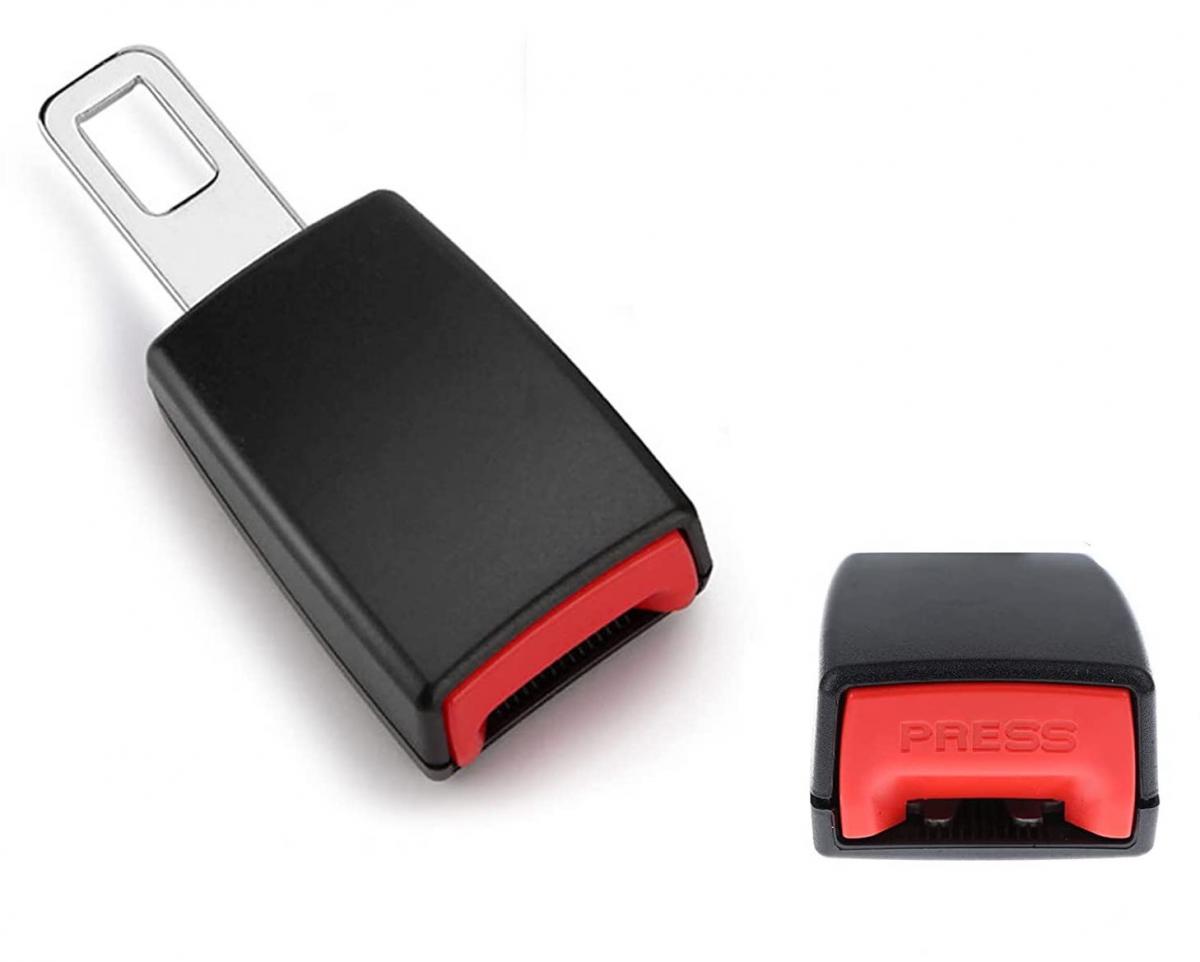
Making Choices
As a child begins to recognize objects associated with certain activities, he can start to point to an object or a picture to indicate a choice or a desire to do something. A child may be presented with actual objects representing different activities or with tangible symbols, which are three-dimensional representations that may be glued to a card. As the child develops a deeper understanding of objects and the activities they represent, these objects or symbols can then be used in other literacy activities, such as the creation of simple books.
To learn more about Tangible Symbols, see the Perkins webcast The Use of Tangible Symbols to Support the Development of Communication and the accompanying handout by Elizabeth Torrey, Speech Language Pathologist, or Tangible Symbol Systems Primer by Charity Rowland and Philip Schweigert.
Setting up a Calendar System
Calendar systems, which are based on the work of Dr. Jan van Dijk, are a concrete way to let a child know what will happen next, so that he can anticipate events in the future, participate in events in the present, and know when an activity is finished. This can lead into storytelling, journaling, and other emerging literacy activities. Calendar systems should be tailored to an individual child’s level of understanding, so that they are at an appropriate developmental level.
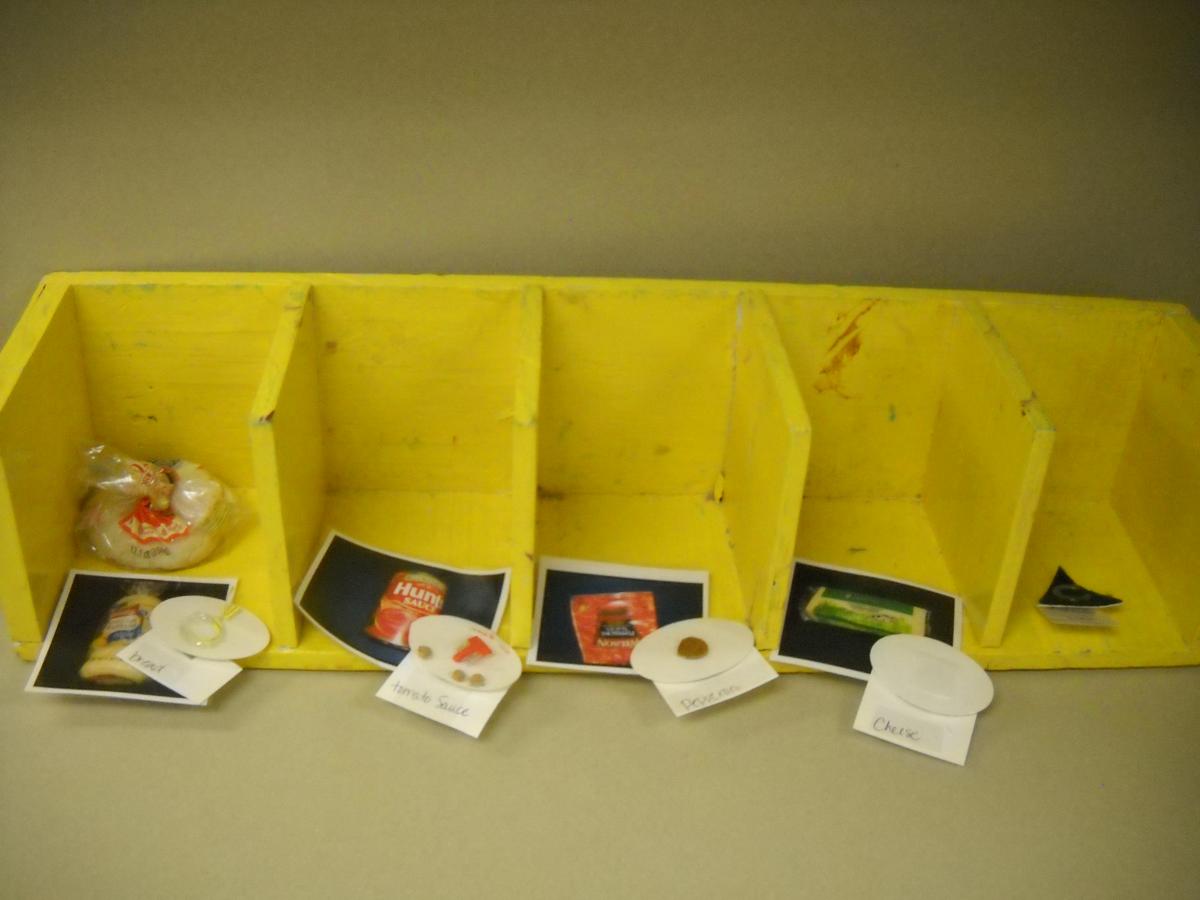
Determining what kind of calendar to use begins with assessment (see tools above). Many formats are possible, such as a simple two-box system, where there is one object representing what one is doing now, and one box for activities that are “finished”. Some students will use simple sequence boards that show the steps in a given routine or activity. Or calendar systems can be much more complex, representing whole days, weeks, and even months and years. Involving children in setting up the calendar, when possible, increases the opportunities for rich discussions about the items in the calendar and can lead to many related literacy activities.
See PE Symbol Song.
In developing a format, consider where the student will use the calendar. It is essential to work as a team with the family, the speech language pathologist and others to figure out what will work best across various settings. For example, some students may be very mobile and might need a portable system. Some families may not have a lot of storage space at home and may be looking for a compact system. The more agreement there is in what type of system to use, the better the chance is that it will be used consistently across multiple settings.
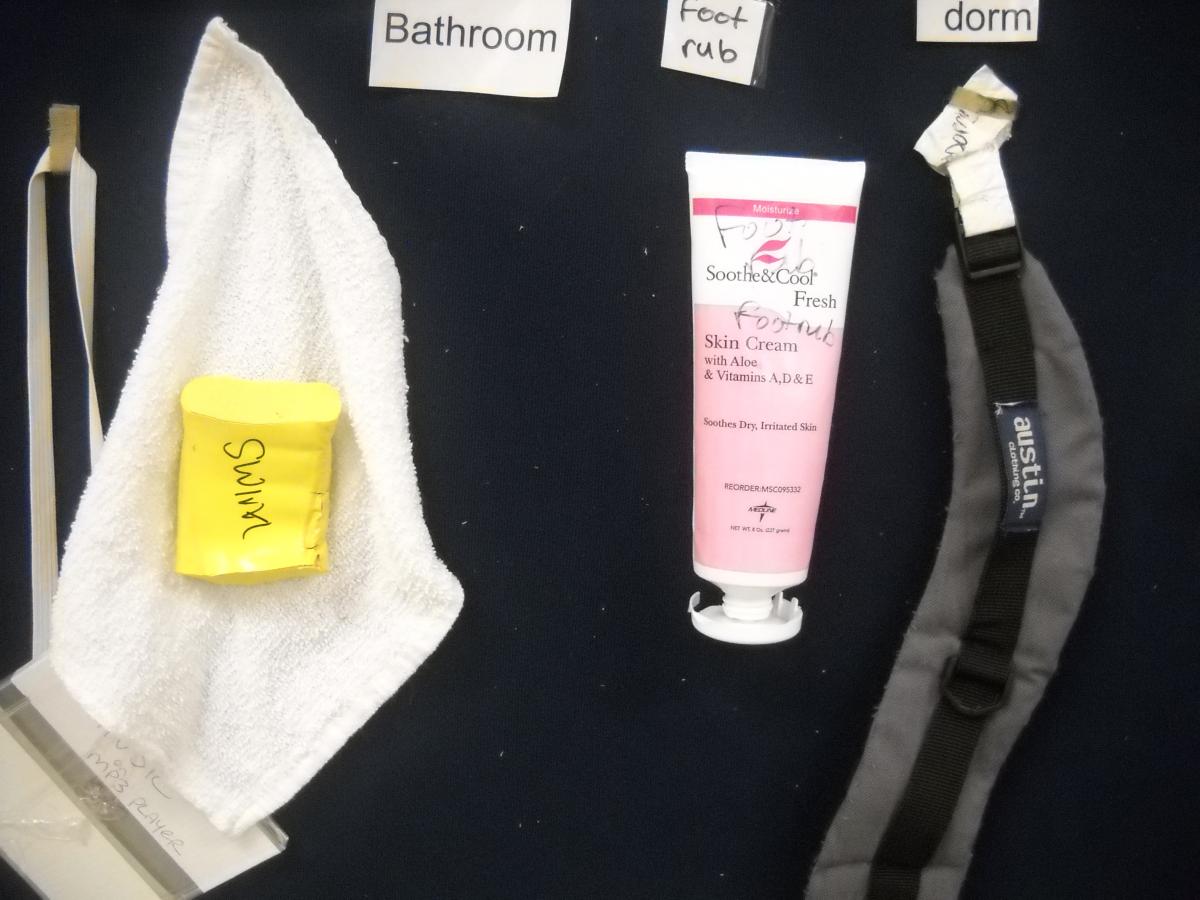
Learn more about calendars:
- Calendars for Students with Multiple Impairments Including Deafblindness by Robbie Blaha
- Calendar Systems (video) with Robbie Blaha
- Calendars, Texas Deafblind Project
- Calendar Systems, National Center on Deaf-Blindness
- Let Me Check My Calendar, by Robbie Blaha and Kate Moss Hurst, Texas School for the Blind and Visually Impaired
- Object Calendar, Nevada Dual Sensory Impairment Project
Object Symbols as Literacy Tools
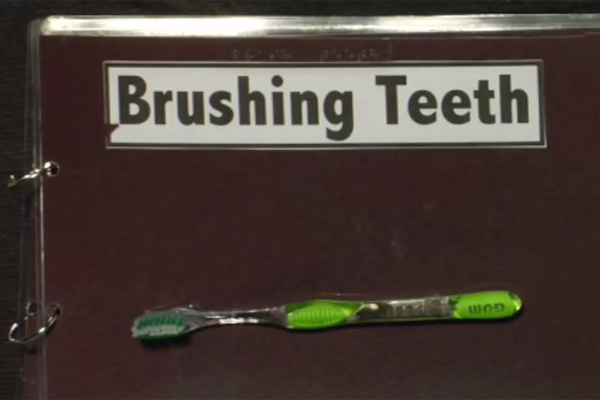
Object symbols can be used when retelling events or writing stories, thereby becoming a bridge to the more formal literacy tools of print and braille. In the image below, the text tells about a birthday party and a birthday candle mounted on a card helps to tell or illustrate the experience book story.
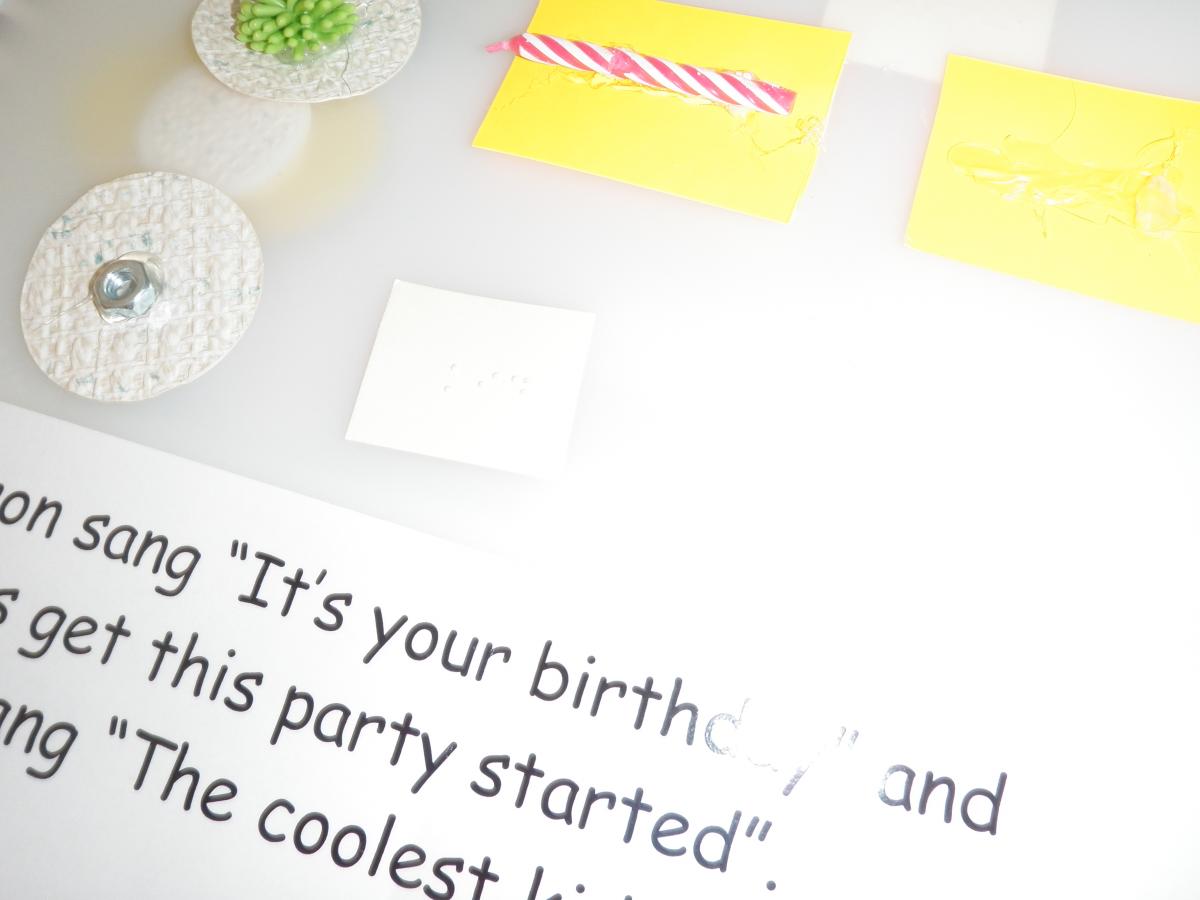
Additional Resources
Communication for Children with Multiple Disabilities, Family Connect
Communication Overview, Texas Deafblind Project
Literacy for Students who are Deafblind, Perkins School for the Blind
Object Communication, California Deafblind Services
Teachable Moments, Perkins eLearning
Calendar Boxes and Schedule Systems as Literacy Tools
